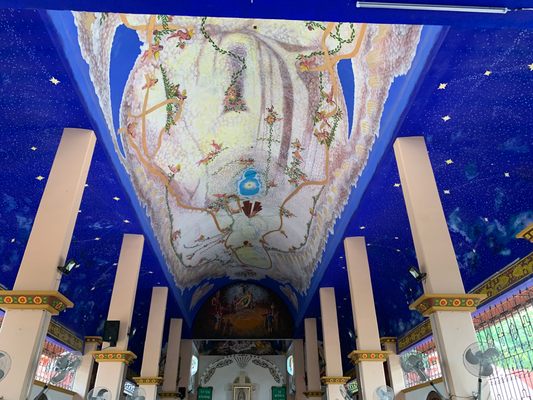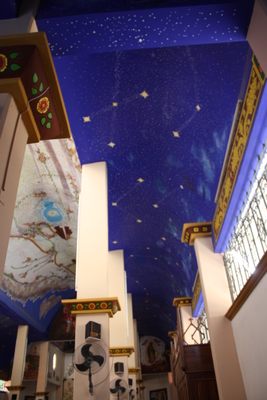About
Muralism is among the most important visual arts movements in Mexico. Plenty of private and public walls, both in the open and in government institutions, are covered in paint. Ranging from social realism to the abstract, many modern trends have started to look to the past for inspiration. One such case is the murals of La Crucecita Church in the Bays of Huatulco.
Murals have been painted in Mexico since before the Spanish conquest. The arrival of European Catholicism led to a new movement of murals intended to evangelize the indigenous population. When artist José Ángel del Signo was asked in 2000 to paint a mural for the inside of this church, which had been recently consecrated to the Virgin of Guadalupe, he gleaned inspiration from those early religious murals.
Del Signo decided to paint the largest image of the Virgin of Guadalupe on the ceiling of the church's central nave. This painting measures 65 feet (20 meters) in length, has an area of 881 square feet (285 square meters), and depicts a non-traditional image of the Virgin. Her body is depicted as being almost ethereal, painted in white with floating elements around. Representing her role as mother of Christ, a blue fetus appears in the area of her womb.
These are not the only signs of these murals' imagery being more esoteric and psychedelic than that of early religious art in Mexico. The vaulted ceilings next to the central nave depict white constellations on an electric blue background, while other walls and ceilings have influences as diverse as Eastern European Orthodox icons and tie-dye-like patterns. Truly, the psychedelia on display here matches the heat of this tropical church, with the whirring of electric fans on every column.
Related Tags
Know Before You Go
This church has a strict policy regarding cellphones, requesting they be turned off or put in silent mode while visiting.
Yucatan: Astronomy, Pyramids & Mayan Legends
Mayan legends, ancient craters, lost cities, and stunning constellations.
Book NowCommunity Contributors
Added By
Published
August 9, 2019




















































